German East Africa Wuga Provisionals
Mar 30, 2016 14:46:28 GMT -5
MikeC99, samb, and 3 more like this
Post by PostmasterGS on Mar 30, 2016 14:46:28 GMT -5
By late 1915, the British blockade of German East Africa had led to a shortage of postage. In January 1916, designs were produced for an emergency issue of stamps which consisted of 4 different designs. In the end, only two designs in three values were actually printed.
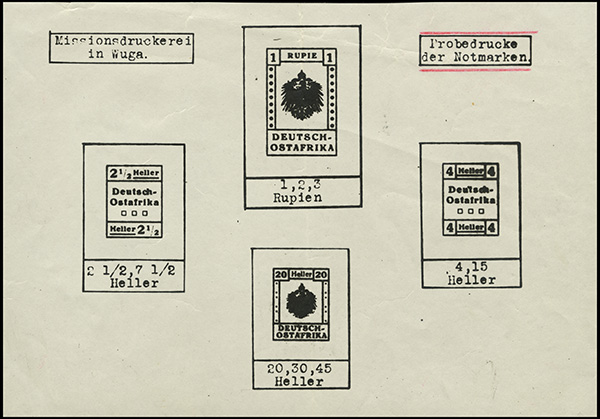
In March 1916, the 2/1 Heller, 7 1/2 Heller, and 1 Rupie designs were printed on the printing press at the Mission Station in Wuga.
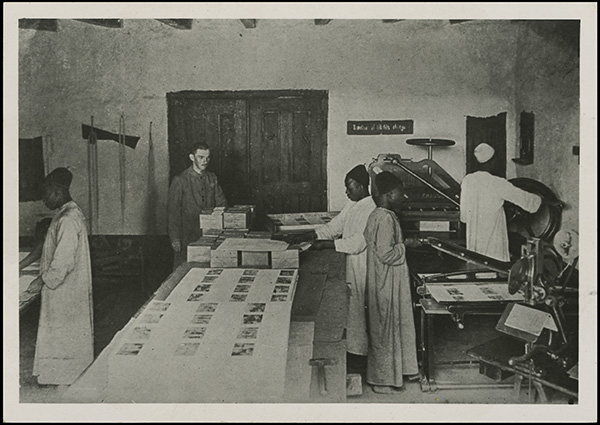
Wuga Mission Station Printing Press in 1912
These deigns are known as the Wuga Provisional Issues.
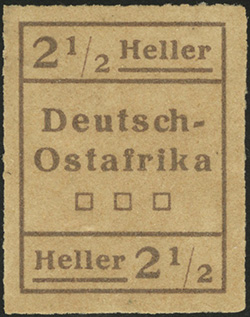
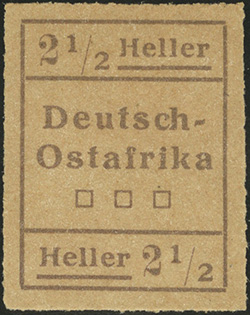
MiNr III/I (left) and III/II (right)
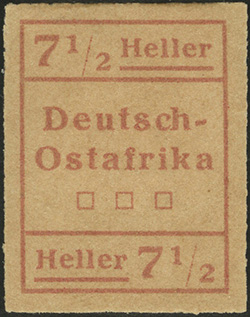
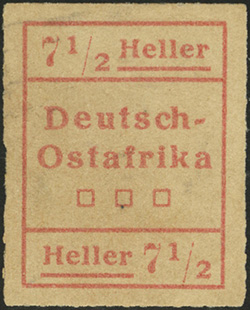
MiNr IV/I (left) and IV/II (right)
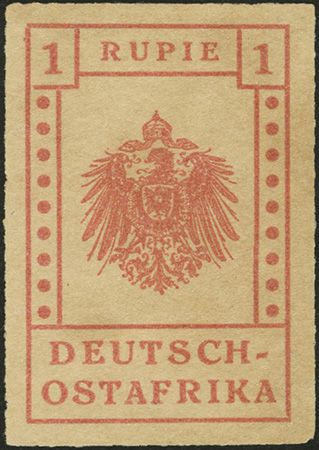
MiNr V
The paper was ungummed and rouletted. The printer had insufficient supply of both “2” and “7” slugs, so a mixture of typefaces was used — each sheet of 100 contained 60 Type I typefaces and 40 Type II typefaces, arranged as shown.
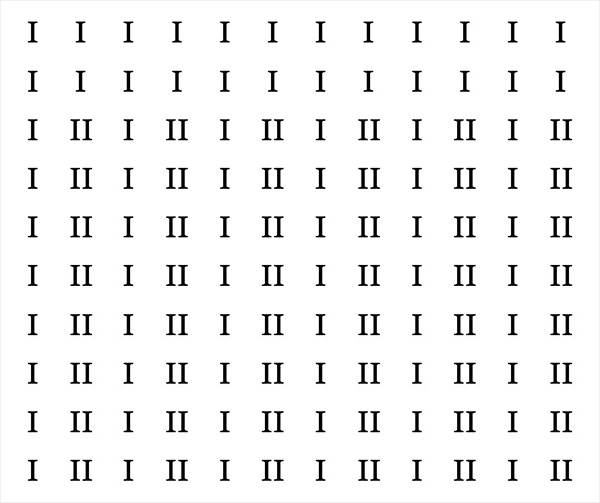
This arrangement can be seen in this rare copy of an entire sheet of MiNr IV.
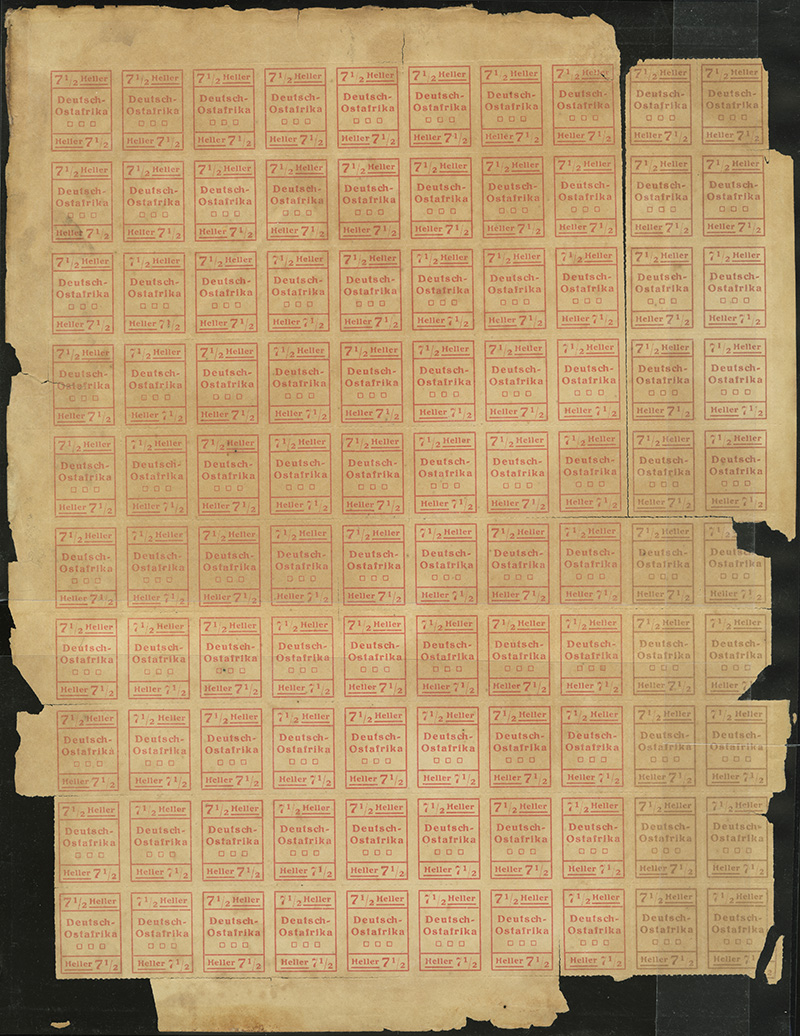
MiNr IV Sheet
Prior to their issue, however, the German freighter Marie broke the blockade, bringing a fresh supply of Yacht Issues. The provisional issues were therefore not used. Shortly thereafter, to prevent their capture by the British, the stamps were buried on a plantation near Morogoro.
In August 1921, the Allies permitted the Germans to return to the scene and recover the stamps. Due to the burial and the humidity, the stamps were in poor condition, and most had to be destroyed. The remainder were auctioned in Germany. The survivors tend to be in poor, very brittle condition.
Total numbers are as follows:

At the auction, many copies were auctioned in se-tenant pairs.
Due to the layout of the sheets, the number of possible se-tenants per sheet is varied. Each sheet could contain a maximum of 48 horizontal se-tentants ot Type W 1 (Type I / Type II), 40 horizontal se-tenants of Type W 2 (Type II / Type I), 5 vertical se-tenants of Type S (Type I over Type II), or a mixture containing lesser numbers of each. The distribution of se-tenants was also limited by which portions of the sheets were salvaged with minimal environmental damage.
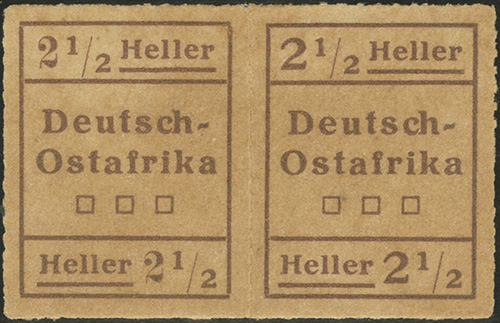
MiNr III W 2
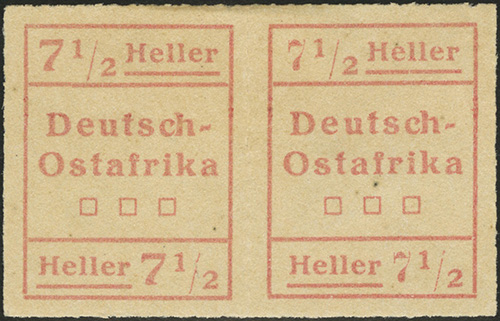
MiNr IV W 1
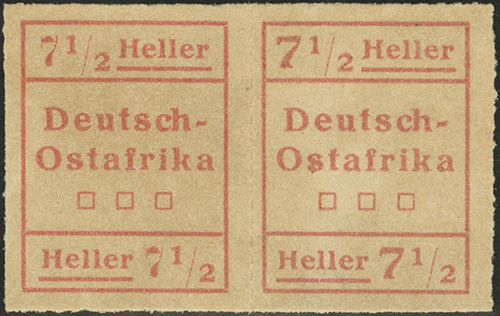
MiNr IV W 2
I've greatly reduced the size of these scans for display on the forum. If you want to see the full-size scans, go here.

In March 1916, the 2/1 Heller, 7 1/2 Heller, and 1 Rupie designs were printed on the printing press at the Mission Station in Wuga.

Wuga Mission Station Printing Press in 1912
These deigns are known as the Wuga Provisional Issues.


MiNr III/I (left) and III/II (right)


MiNr IV/I (left) and IV/II (right)

MiNr V
The paper was ungummed and rouletted. The printer had insufficient supply of both “2” and “7” slugs, so a mixture of typefaces was used — each sheet of 100 contained 60 Type I typefaces and 40 Type II typefaces, arranged as shown.

This arrangement can be seen in this rare copy of an entire sheet of MiNr IV.

MiNr IV Sheet
Prior to their issue, however, the German freighter Marie broke the blockade, bringing a fresh supply of Yacht Issues. The provisional issues were therefore not used. Shortly thereafter, to prevent their capture by the British, the stamps were buried on a plantation near Morogoro.
In August 1921, the Allies permitted the Germans to return to the scene and recover the stamps. Due to the burial and the humidity, the stamps were in poor condition, and most had to be destroyed. The remainder were auctioned in Germany. The survivors tend to be in poor, very brittle condition.
Total numbers are as follows:

At the auction, many copies were auctioned in se-tenant pairs.
Due to the layout of the sheets, the number of possible se-tenants per sheet is varied. Each sheet could contain a maximum of 48 horizontal se-tentants ot Type W 1 (Type I / Type II), 40 horizontal se-tenants of Type W 2 (Type II / Type I), 5 vertical se-tenants of Type S (Type I over Type II), or a mixture containing lesser numbers of each. The distribution of se-tenants was also limited by which portions of the sheets were salvaged with minimal environmental damage.

MiNr III W 2

MiNr IV W 1

MiNr IV W 2
I've greatly reduced the size of these scans for display on the forum. If you want to see the full-size scans, go here.





